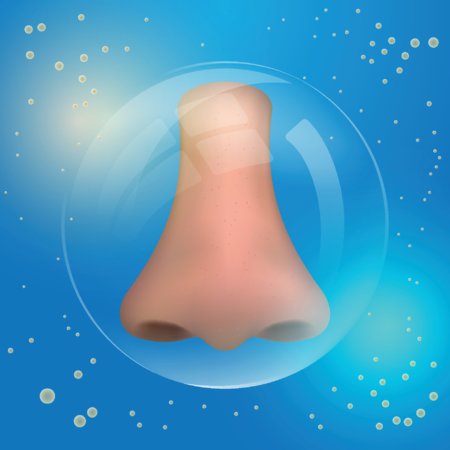
“Recent evidence suggests that sphenopalatine ganglion blocks using either lidocaine or cold exposure can reduce duration of migraine headaches,” while “several clinical studies have clearly demonstrated the use of high-flow oxygen in cluster headache,” they wrote.
To assess the relative contribution of cooling and oxygen therapy in alleviating pain of acute migraine headaches, researchers randomized migraineurs to receive either nasal high-flow dry oxygen (n = 12), dry air (n = 11), humidified oxygen (n = 20), or humidified air (control) (n = 8) at 15 L/min for 15 minutes.
“Oxygen administration itself results in vasoconstriction of blood vessels and causes pain relief. However, the overall hypothesis of this proposal is that dry gas administered at a flow rate of 15 L/min will cause mucosal water evaporation with local cooling of the upper airways adjacent to the sphenopalatine ganglion, which in turn will reduce the pain of the migraine,” researchers said.
The single-center, placebo-controlled, parallel group, patient blinded superiority trial took place at the outpatient migraine clinic at the Institute for Clinical and Translational Research at Johns Hopkins University.
All participants reported a diagnosis of migraine more than 1 year prior to involvement, had their first migraine attack before age 50, and had at least 1 migraine attack per month. Patients also reported no changes in their migraine prophylaxis medications for at least 3 months prior to the trial and were diagnosed with episodic migraine based on International Classification of Headache Disorders, third edition (ICHD-3) criteria.
Migraine Disability Assessment Scale (MIDAS) scores and Visual Analog Scale (VAS) questionnaire responses were recorded at baseline, after 5 minutes, 15 minutes, 2 hours, and 24 hours.
Of the 51 patients included, with a mean (SD) age of 48 (15) years, the majority (82%) were female and presented with moderate-severe intensity migraines. Gasses were administered at 98.6 degrees Fahrenheit and no significant difference in baseline pain scores between the 4 arms was found.
Analyses revealed:
- When compared to the control arm, all therapeutic arms showed a significantly greater reduction in pain scores at 2 hours of therapy with dry oxygen (–1.6 [95% CI, –2.3 to –0.9]), dry air (–1.7 [95% CI, –2.6 to –0.7]), and humidified oxygen (–2.3 [95% CI, –3.5 to –1.1]).
- A significantly greater reduction in 2-hour photosensitivity scores was noted in all therapeutic arms (–1.8 [95% CI, –3.2 to –0.4] for dry oxygen; –1.7 [95% CI, –2.9 to –0.4] for dry air; (–2.1 [95% CI, –3.6 to –0.6] for humidified oxygen) compared with the control arm.
- The presence of oxygen and dryness were independently associated with significant reductions in pain and photosensitivity scores.
No adverse events were reported throughout the trial. Results indicate both the cooling effect of dry air and the vasoconstrictive effects of oxygen could contribute to pain relief. However, dry air was found to be more effective than dry oxygen in terms of pain score reduction/pain relief.
“It is quite possible that oxygen and air-cooling act via similar pathways to reduce migraine symptoms, or vasoconstriction might impair the cooling efficacy by reducing the mucosal blood flow, although this is highly speculative,” authors wrote.
No additional adjustments were made for multiple testing among the therapeutic and control groups, making a limitation to the study. In addition, the relatively small sample size warrants future studies to determine whether results can be replicated across large, diverse patient groups.
Trans-nasal evaporative cooling can be used as an effective adjunctive therapy in the treatment of migraine, researchers concluded. “However, further studies are required to clarify the optimal flow rate and the duration of this therapy for producing a maximal effect.”
Reference
Shah R, Assis F, Narasimhan B, et al. Trans-nasal high-flow dehumidified air in acute migraine headaches: a randomized controlled trial. Cephalalgia. Published online February 25, 2021. doi:10.1177/0333102421997766
The Link LonkMarch 23, 2021 at 11:47PM
https://www.ajmc.com/view/is-high-flow-dry-gas-therapy-effective-in-reducing-acute-migraine-pain-
Is High-Flow Dry Gas Therapy Effective in Reducing Acute Migraine Pain? - AJMC.com Managed Markets Network
https://news.google.com/search?q=dry&hl=en-US&gl=US&ceid=US:en

No comments:
Post a Comment